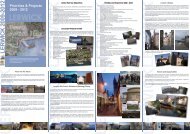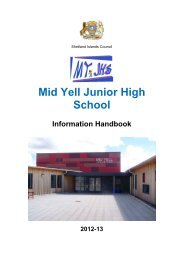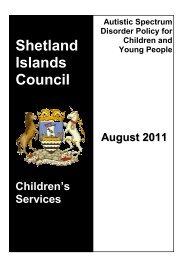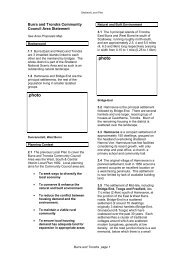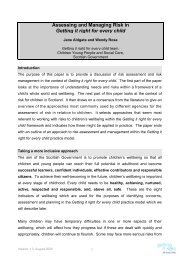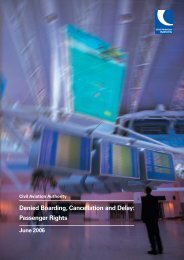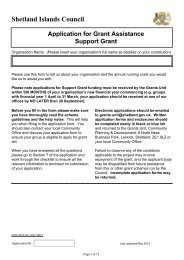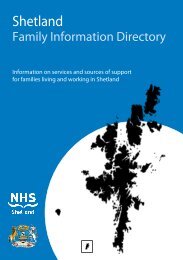Shetland Local Landscape Designation Review: Final Report
Shetland Local Landscape Designation Review: Final Report
Shetland Local Landscape Designation Review: Final Report
Create successful ePaper yourself
Turn your PDF publications into a flip-book with our unique Google optimized e-Paper software.
Candidate <strong>Local</strong> <strong>Landscape</strong> Area 14: Colvadale and Muness<br />
Location and boundaries:<br />
This area is located on the southeast coast of Unst, centred on the bay of Easting. The northern<br />
boundary follows the ridge line from Clugan, turning south across Virda Field, Hill of Colvadale<br />
and along a watercourse behind Vord Hill. From Loch of Hoversta the boundary follows tracks<br />
and minor roads across Breck of Still to Muness, then south to Scolla Wick. These boundaries<br />
enclose the visual setting of the wide bay between Mu Ness and Huney.<br />
Key characteristics:<br />
<br />
<br />
<br />
Deserted settlement and relict patterns of croft boundaries and empty buildings;<br />
Backed by the bare, gravelly moors derived from the underlying serpentinite geology;<br />
An empty landscape, no longer settled but with extensive time depth.<br />
<strong>Designation</strong> statement:<br />
This is an unusual landscape, characterised by attractive colours of rusty brown crags, rocky<br />
moorland and the bright sand at Sandwick and The Yei. The area is underlain by the distinctive<br />
geology of serpentinite rock, containing rare minerals, and producing a bare gravelly moorland,<br />
supporting a rare heathland flora.<br />
The land slopes gently from this moorland to the low-lying coast, largely rocky with occasional<br />
small shingle beaches. The large beach at Sandwick is the only stretch of sand, excepting the<br />
developing tombolo at Huney. These isolated patches of bright white-yellow sand stand out in<br />
views across the grey-green landscape. Though not greatly indented or dramatic, the coast is<br />
locally rugged and intricate.<br />
There is a strong sense of time depth, represented by a range of surviving cultural heritage<br />
features. The excavated longhouse Sandwick is one of many Unst sites associated with the Viking<br />
period. More recent history is represented by the extensive deserted settlements in the area,<br />
the most substantial being at Colvadale, abandoned since the 1950s. The isolated burial ground<br />
at Framgord, with its ruined pre-reformation kirk, is a reminder of the population that once<br />
flourished here, as are the numerous named features along the now empty coast.<br />
Much of this coastline is relatively inaccessible. Due to its location on the west of Unst, the area<br />
feels remote, even from other parts of <strong>Shetland</strong>. There are few views of other islands, aside<br />
from Fetlar to the south, and long scenic views to the distant Out Skerries.<br />
Development guidelines:<br />
<br />
<br />
<br />
<br />
Seek to retain the unsettled isolation of this area, retaining its cultural and natural values<br />
Promote responsible access and enable interpretation of the recent and distant past, as well<br />
as the unique geological material<br />
The area around Muness, where there is active settlement, forms part of the setting of this<br />
landscape, but is not central. Development in this area should be sympathetic to the setting<br />
of the area<br />
Potentially, seek to conserve some of the relict stone walls and buildings<br />
<strong>Shetland</strong> Islands <strong>Local</strong> <strong>Landscape</strong> <strong>Designation</strong> <strong>Review</strong><br />
Land Use Consultants<br />
<strong>Final</strong> <strong>Report</strong> 80 October 2011



